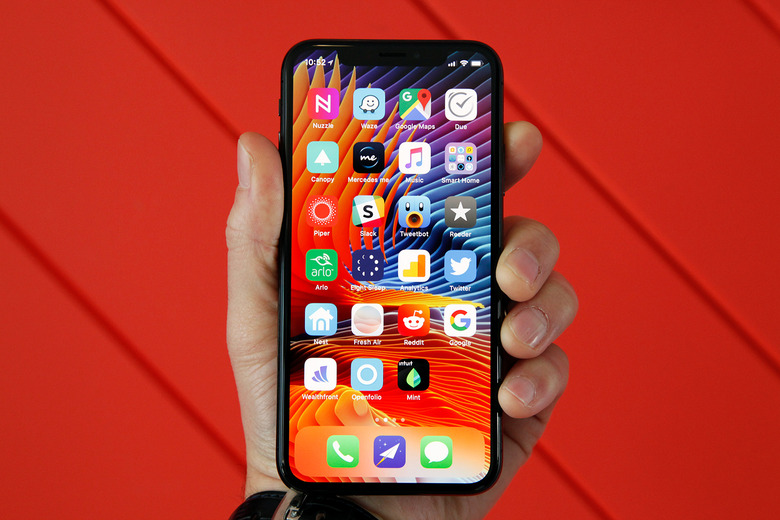Nearly A Year Later, Opinions On The iPhone X's Most Controversial New Feature Are Still Mixed
It has now been almost one year since Apple unveiled the iPhone X. The handset is a complete reimagining of Apple's iPhone, and it's without question the most significant update the company's smartphone line has ever seen. Features that had become staples of the iPhone user experience were eliminated and replaced with new designs and features. In fact, things as core to the user experience as the way people navigate the UI were revamped.
Apple fans have been known to freak out when the company makes even the simplest change to a new iPhone, so it's understandable that the iPhone X made some waves when it was first released. And by "made some waves," we mean set off a panic that might have been even worse than when Apple ditched the headphone jack on the iPhone 7 in 2016.
Normally when Apple fans panic about a change, it ends up being much ado about nothing. The headphone jack is a perfect example; the vast majority of new headphones sold these days are wireless, and most users don't even think about the headphone jack anymore. But in the case of the iPhone X's most controversial new feature, it turns out that much of the concern was warranted.
Apple iPhone X is different from earlier iPhone models in so many ways that it can be difficult to list them all. If you ask someone what the most controversial change is, however, he or she will inevitably mention one of two things.
First, we have the notch. People definitely freaked out when they saw that a big chunk had been taken out of the top of the iPhone's display. But we can now say with 100% certainty that it was much ado about nothing. Nearly every other smartphone maker on the planet has copied Apple's iPhone X display design, and their phones are selling just fine. As for iPhone X users specifically, they don't even notice the notch anymore.
The second answer you might get when you ask about the iPhone X's most controversial feature also relates to the notch, and this is the concern that turns out to have been warranted. That's right, we're talking about Face ID. The very reason the iPhone X's notch exists is to make room for the handset's TrueDepth camera system, a series of sophisticated sensors that enable secure 3D facial recognition. You know how the facial recognition on Samsung phones can be completely bypassed with a simple photo? Yeah, that's not happening with Face ID, and TrueDepth is the reason why.
Now, no one questions whether or not Face ID is secure. We all know it is. The problem people have with Face ID is that for many users, it simply doesn't work well. That might not be an issue if the iPhone X still had Touch ID, Apple's beloved fingerprint authentication system. But it doesn't, which means users who consistently have trouble with Face ID have no other way to quickly and easily unlock their phones, open secure apps, or authenticate mobile payments. They're basically bumped back to the old days of having to constantly type in a PIN or password.
In a recent thread in the iPhone subreddit on Reddit titled "iPhone X users, how has Face ID fared for you?" a user who goes by the name "Makegooduseof" posed a simple but important question. And unfortunately, the responses were all too predictable.
Many of the top-voted comments in the thread come from people who love Face ID. They find that Apple's new tech works wonderfully and reliably, and some people even say they would never want to go back to Touch ID. But not everyone has the same experience with Face ID. A smaller but still significant portion of the comments come from users who have not had good experiences with Face ID, and it's quite concerning considering how integral Face ID is to the iPhone X user experience.
"I've had an iPhone X since early December and still, passionately, hate Face ID," one user wrote. "It works about 3/4 of the time which means I type my password a lot. A lot a lot. It also never works if the phone is sideways which is bad for someone like me who lays in bed and looks at their phone."
Others chimed in with similar experiences, and we've heard much of the same from people we've spoken with offline about Face ID. Most users find that Face ID works wonderfully, but a decent amount of people find that it fails far too often, and that understandably results in a great deal of frustration. This is of particular concern for many people right now since we're about one month away from seeing Apple unveil three brand new iPhone models that all ditch Touch ID in favor of Face ID.
